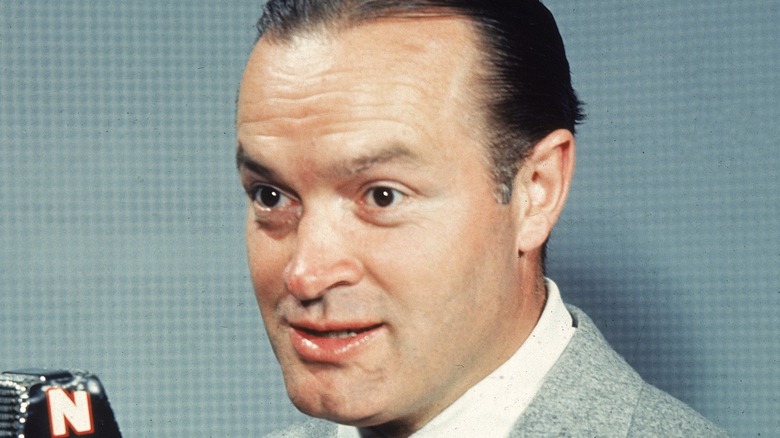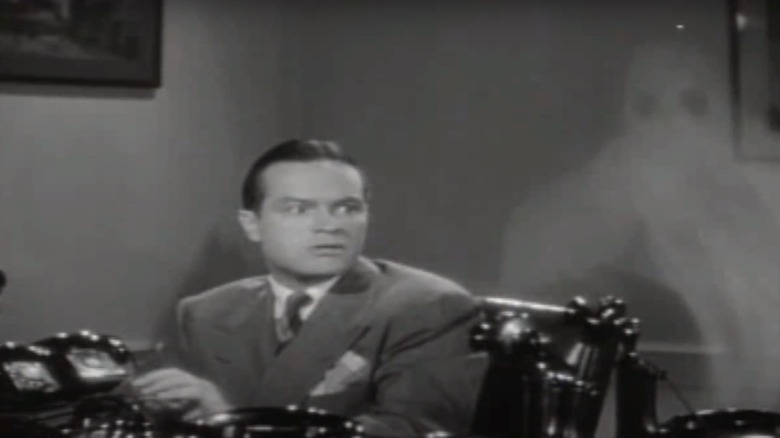The Bob Hope Horror Movie You Never Knew Existed
In 2005, horror comedies got a shot in the arm with Edgar Wright's "Shaun of the Dead." The years that followed saw a groundswell of enthusiasm for mixing scares and laughs, with flicks like "Tucker and Dale vs. Evil," "What We Do In The Shadows," "Happy Death Day," and "Little Monsters" providing equal parts hilarity and scare-ity. With so many great recent examples and also "Yoga Hosers," it's easy to forget that "horror comedy" isn't a new genre. Abbott and Costello had already met more monsters than Sam and Dean Winchester before you were even a concept, and they weren't even the first ones to try the format on for size.
In 1940, Bob Hope – ask your parents to ask their parents – starred in a film called "The Ghost Breakers." Directed by George Marshall of "How The West Was Won" (again, find an adult), it sees Hope in the role of crime reporter Lawrence "Larry" Lawrence. Lawrence finds himself in a predicament that was apparently endemic to comedy characters of the era, locking himself in a steamer trunk to hide from bad guys and accidentally being shipped overseas.
More specifically, the poor schlub is sent to exotic Cuba, where a freshly minted heiress (Paulette Goddard) is set to explore her newly inherited, entirely ominous mansion. From there, the race is on to figure out whether the new digs are actually haunted, or if some nefarious nogoodnik is trying to Scooby-Doo a woman out of her property.
Where there's death, there's Hope
It's been eighty years since "The Ghost Breakers" hit projector screens, so it's worth asking: Does it hold up?
Good question. There are a couple of schools of thought here. On the one hand, yes, the film is considered a classic. It holds an 86% critical approval rating on Rotten Tomatoes, and is generally remembered fondly as a marked improvement on Hope and Goddard's earlier horror comedy, 1939's "The Cat and the Canary." The scenery is shadowy, the high-contrast black and white shots are striking, and the dialogue rolls off the actors' tongues like they're auctioning off Lucky Strike tobacco.
It's also the better part of a century old, and swaths of the story are hard to label with a more charitable description than "a product of their time." Veteran performer Willie Best, who Hope reportedly called "the best actor I know" (via the Mississippi Encyclopedia), plays to stereotype less often than audiences were probably used to, but he's a far cry from Eddie Anderson's arguable high-water mark, and the gags about fried chicken are, to say the absolute least, deeply uncomfortable to watch.
On a less dour note, "The Ghost Breakers," itself a remake of a remake of an adaptation of a play, was remade again in 1953, with George Marshall directing once again. This version, titled "Scared Stiff," starred Dean Martin and Jerry Lewis, and featured cameo appearances by Bing Crosby and Bob Hope.

